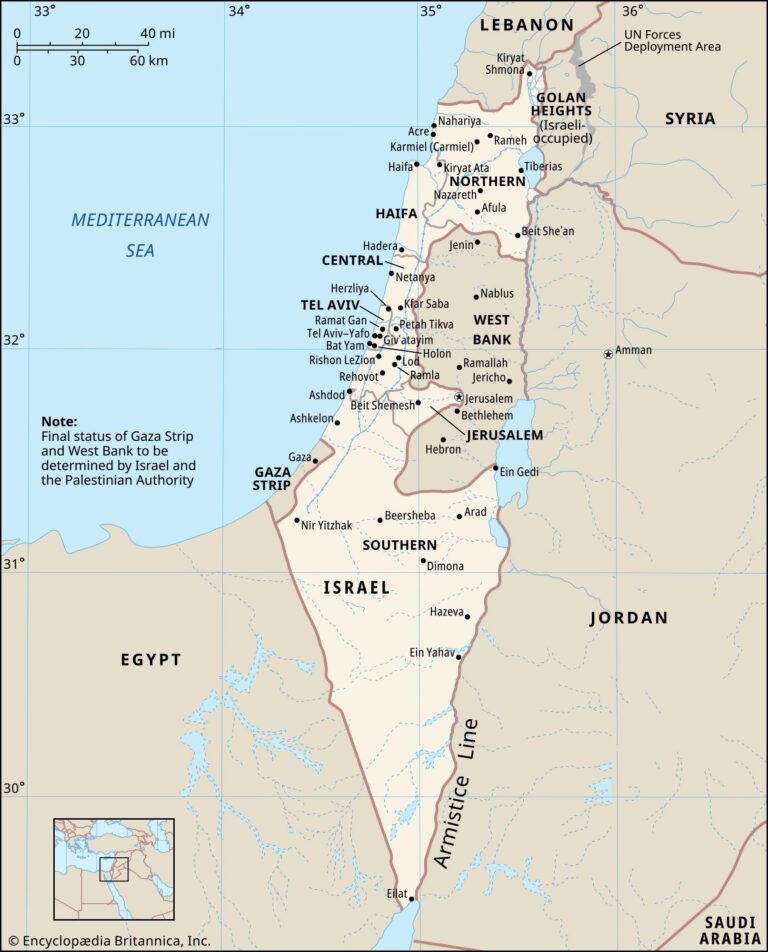Israel continues to maintain a significant military presence along the southern border of Lebanon amid escalating tensions with the Hezbollah militant group, sources report. The move underscores ongoing security concerns in the volatile region, where periodic clashes and political instability have raised alarms over the potential for renewed conflict. As Hezbollah and Israeli forces remain locked in a tense standoff, international observers watch closely for developments that could further destabilize the already fragile situation.
Israel Reinforces Military Positions in Southern Lebanon Amid Rising Hezbollah Hostilities
In response to escalating confrontations along the border, Israel has taken decisive steps to enhance its military fortifications in Southern Lebanon. Troop deployments have increased, with new defensive infrastructure being established to deter potential cross-border attacks attributed to Hezbollah factions. Military officials emphasize the importance of maintaining a robust security posture amid growing intelligence reports indicating potential hostile maneuvers by the group.
The strategic reinforcement involves a combination of advanced surveillance technology and strengthened ground positions, specifically aimed at countering asymmetrical warfare tactics. Key components of the military upgrade include:
- Installation of cutting-edge radar systems to monitor Hezbollah activities with greater precision.
- Deployment of rapid response units trained in terrain-specific operations.
- Enhanced coordination with allied regional forces to ensure real-time intelligence sharing.
| Military Asset | Purpose | Deployment Area |
|---|---|---|
| Mobile Artillery Units | Rapid fire support | Border Outposts |
| Unmanned Aerial Vehicles | Surveillance & Reconnaissance | Southern Border Strip |
| Electronic Warfare Systems | Signal Interception | Command Posts |
Strategic Implications of Israel’s Continued Presence for Regional Stability
The sustained Israeli military foothold in Southern Lebanon continues to exert a complex influence on regional stability, acting as both a deterrent against militant incursions and a provocative factor triggering periodic escalations. This ongoing presence is viewed by Hezbollah as a direct challenge to Lebanese sovereignty, often resulting in heightened tensions along the border. Additionally, Israel’s strategic positioning enables rapid response capabilities, which regional actors interpret variably-as either a safeguard or a catalyst for conflict escalation. The interplay between deterrence and provocation reinforces an uneasy equilibrium that shapes diplomatic calculations far beyond Lebanon’s borders.
Key strategic dynamics include:
- Buffer Zone Maintenance: Israel’s presence aims to prevent weapons smuggling and militia build-ups, contributing to a fragile security buffer.
- Proxy Escalations: Hezbollah’s retaliatory posture remains influenced by Israeli deployments, which can trigger indirect confrontations.
- International Diplomacy: Regional powers and global actors monitor the situation, balancing responses to avoid broader conflict outbreaks.
| Factor | Implication | Outcome | ||
|---|---|---|---|---|
| Israeli Military Advances | Increased border security | Reduced surprise attacks | ||
| Hezbollah Mobilization | Heightened readiness and rhetoric | Hezbollah Mobilization | Heightened readiness and rhetoric | Increased risk of proxy clashes |
| Recommendation | Expected Outcome |
|---|---|
| Multilateral mediation efforts | Increased trust and political willingness to negotiate |
| Enhanced UNIFIL monitoring | Reduced ceasefire violations and transparent reporting |
| Community-based peacebuilding | Stronger grassroots support for stability |
The Way Forward
As tensions continue to simmer along the volatile Lebanon-Israel border, Israel’s sustained military presence in southern Lebanon underscores the fragile security landscape shaped by Hezbollah’s influence and regional dynamics. Analysts caution that any escalation could further destabilize an already fragile area, prompting close international attention. The situation remains fluid, with all parties closely monitoring developments that could impact the broader Middle East security environment.




